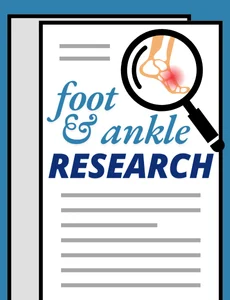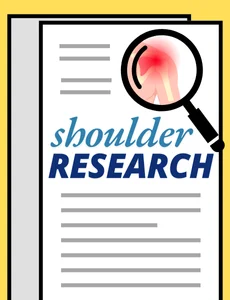Is opioid free surgery safe and effective in some elective orthopedic procedures? Our research out of the OrthoCarolina Research Institute (OCRI) found that answer to be “yes.”
People think the stronger the pain medicine, the more pain relief I’m going to get, but what OCRI found is the opposite.
In fact, at points along a patient’s recovery from surgery, patients who did not take any opioids had better pain control, improved comfort, and increased pain satisfaction compared to patients who were prescribed opioids during and after surgery.
You can read all about it in the latest of OCRI’s 8 research papers on this topic titled, “Opioid-Free Perioperative Pain Protocol Provides Non-Inferior Pain Control Compared to Traditional Opioid-Containing Perioperative Pain Management in Patients undergoing Elective Orthopedic Surgery,” published in The Journal of Bone and Joint Surgery.
It’s been well publicized that our country is in the middle of an opioid epidemic. However, what we don’t hear about are solutions to reduce the number of opioid pills patients take home.
One of out motivations behind this project was to explore alternative medications and solutions for patients in hopes we can all rely on different types of medications that are safer to take. We know reducing the number of opioid prescriptions that go home with patients ultimately means there is less chance of highly addictive pills circulating in our communities which leads to less addiction and reduced risk of overdose.
OCRI has published a total of 8 peer reviewed publications focusing on five common orthopedic surgeries
The number of patients who participated in OCRI’s randomized trial. Half were randomly selected to participate in the opioid free surgery group, the other received the traditional opioid regimen.
Starting at 12 hours after surgery, patients that were in the opioid free group had significantly less pain than the patients that took opioids.
OrthoCarolina's Dr. Nady Hamid is the driving force behind this research and details why opioid free surgery is a game changer


“Opioid-Free Perioperative Pain Protocol Provides Non-Inferior Pain Control Compared to Traditional Opioid-Containing Perioperative Pain Management in Patients undergoing Elective Orthopedic Surgery”
This article published in The Journal of Bone and Joint Surgery is the culmination of 8 years of research testing whether an alternative to opioids was safe and effective for orthopedic surgery patients. Patients undergoing a hip replacement, shoulder replacement, CMS Arthroplasty hand procedure, bunion correction (Hallux Valgus/ Rigidus), or ACDF/ACDA spine surgery were studied during the course of this clinical trial.
In recent years orthopedic surgeons have attempted to decrease opioid consumption through multimodal pain management. Limited effort, however, has been made in eliminating opioids entirely in the peri-operative period. The purpose of this study was to compare the efficacy and safety of a novel opioid-free (OF) pain management pathway compared to an opioid-containing (OC) pathway across five, common orthopedic subspecialty surgical procedures.
In a 1:1 unblinded fashion, 315 patients were randomized to either an opioid-free (n=157) or opioid-containing (n=158) peri-operative pain management pathway. Pain was measured with a numeric pain rating scale (NPRS) of 0-10 at 6-hours, 12-hours, 24-hours (primary outcome assessing noninferiority), 2-, 6-weeks, and 1-year following surgery. Patient characteristics, deviations from pain management pathway, morphine milligram equivalents (MME), readmissions, adverse events, and patient reported outcomes were collected.
There were 315 patients in the final group (mean age 63 years, 59.7% female; 87.7% White, 12.4% black/African-American, 1.0% Hispanic/Latino, 0.6% American Indian, 0.3% unknown). At 24-hours, the median NPRS among the OF group was significantly (p<.0001) noninferior to the OC group [OF 2 (IQR 0, 4) vs OC 4 IQR (2, 6)]. Secondarily, pain levels were significantly lower among OF patients than OC group at 12-hours and 2-weeks (p=.0003, p=.0173, respectively). Pain scores at the 6-hour, 6-week, and 1-year time points were similar. Patients in the OF group reported significantly greater comfort at 24-hours (p=.0392) and higher pain satisfaction at 6-weeks (p=.0355). There were no reported adverse events or unplanned readmissions. Demographics were similar between the two groups.
Across five, common orthopedic subspecialty procedures, an opioid-free pain management pathway is safe, effective, and provides noninferior pain control at 24-hours compared to the opioid-containing pathway.
After randomly assigning more than 300 patients to either an opioid-free and traditional opioid pain medication protocol, our research shows that our opioid-free pain medicine regimen, used before, during, and after surgery, is safe and effective in controlling pain without more complications for patients.
Patients who opted into this clinical trial were asked questions about their pain scores and comfort levels at set time increments (6-hours, 12-hours, and 2-weeks after surgery). Comfort was measured by patients as a combination of pain, constipation, nausea, and vomiting. All of which are common side effects of undergoing a traditional opioid-based pain protocol.
Our findings show a patient’s pain can be well controlled after surgery without taking opioid medication. On top of that, patients reported less complications and side effects than they did in the opioid containing group in the study.
If more doctors and patients opt for opioid alternatives during and after surgery, that removes the risk of addiction or unused opioid prescriptions at home falling into the wrong hands.



Unidentified breakthroughs in combatting the opioid epidemic are just waiting to be discovered, but we can’t do it without the support of generous people like you.